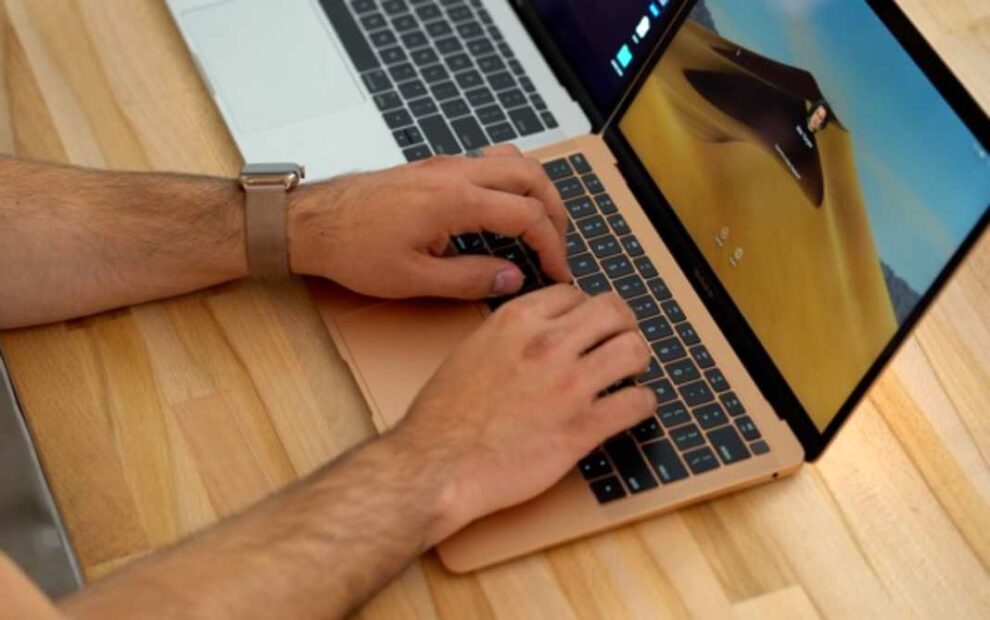What you usually use on your MacBook is more or less just the surface that you primarily need. But do you know the many things your MacBook can do? Are you aware of its unique and valuable, and fun hidden features? Well, a macOS has many things yet to discover and explore.
If not now, then when? Hence, this article is a guide that will highlight some of the hidden features of the MacBook. You will know more about the macOS you have been using for years. Apart from the fantastic discovery of new features, that shall also include some tips and tricks to make your MacBook usage more fun and exciting.
Directly put, the macOS itself is a complex concept. As a result, your MacBook has so much to offer. It has so much complex stuff, packed with goodies and valuable shortcuts. What you do with all the native features can be much better and faster if you know the hidden features.
With several macOS-compatible third-party utilities, there are no bounds to how much you can enhance those native everyday features and functions. No matter whether your device is running on macOS Monterey or any other, these hidden features of MacBooks are preliminary to each.
Similar to the Airdrop feature that is unique and distinct only to macOS devices, there are many more that you may not be aware of. Or that even if you know, you do not see the application process.
macOS may seem unchanged, with no exciting dynamics from the surface. But if you dig deeper into the macOS features, it has a quality and extensive string of useful hidden stuff. We shall now discuss some lesser-known facts about your MacBook that could potentially improve your macOS experience.
Built-in emoji support
This feature lets you make your desktop folder icons more exciting by turning them into emojis of your choice. While that is not a necessity, making your Mac screen look more exciting and fresh is a fun idea. If you knew about it just now, here are the steps.
If you do not want to mess around with your existing desktop folders, you can simply create a new folder to try out the emoji feature.
- Create a new desktop folder on your Mac by going to the “File” tab at the top of the screen. Click on “New folder” to create it.
- Next, go to Google search and look for the emoji you prefer to use, like a smiley emoji or crying emoji, or heart emoji.
- Click on the emoji image and drag it to the desktop screen.
- Preview the emoji by double-clicking on it.
- Now make the emoji transparent. For that, click on the “markup” icon first. Then, click the image’s background to get the outline of the emoji. As you see it, click on it, then select “Edit”> “Cut.“
- Hit the markup icon again to drag a box around the image.
- Click on “Edit”> “Select All.”
- Now hit the “Cmd + C” keys.
- Please go to the new folder on your desktop screen and right-click on it.
- From the option, select “Get Info.”
- Under the Get Info page, select the “Blue folder” icon.
- Now, the “Cmd + V” keys are used to paste the emoji image.
These steps will enable you to turn your dull desktop folder into an emoji look.
Hide/customize the menu bar
The Menu bar on MacBook is not that eyesore. Even then, there are ways to hide or customize it. The processes are straightforward.
To hide your Mac’s Menu bar: Go to the device’s “System Preferences”> “Dock and Menu Bar”> select “Automatically hide and show the menu bar.”
To customize your Mac’s Menu bar: Hold the “Cmd” key, then drag the Menu bar icons to different locations. Or, you can even remove all of them altogether.
Pin the Universal Media Player to the Menu Bar
Many people love listening to music while working on their laptops and computers. If you are one of them, there is a hack to minimize the activity of your Mac instead of toggling between different apps. Rather than going back and forth between your work and the universal media player, you can pin the program to the menu bar itself.
The widget is now visible at the front menu bar, so you can go to it without holding your work. You can play, adjust, and pause the audio source from every platform, including Apple Music and YouTube media.
Steps to pin the universal media player to the desktop menu bar: Visit “System Preferences”> “Dock and Menu Bar”> “Playing”> “Show in Menu Bar.”
That will bring or pin the media player widget on the screen. You can check the playback status from the dropdown menu.
Screenshot and recorder tool.
Everyone requires screenshots and recording features on most devices. At most, recording and screenshotting are a part of the display features of most devices. But for macOS, it has a separate all-in-one screenshot and recording tool.
The dedicated tool enables recording screen content or screenshots on macOS devices. For MacBooks, this tool appears like a dashboard interface with multiple options to capture the screen. You can either record a portion of the screen or choose whether to input sound into the screen capture or not.
To open the screenshot app on your MacBook, you can do so from the launchpad or press the “Cmd + Shift + 5” keys together. That is the keyboard shortcut.
Make volume adjustments on MacBook direct.
Volume adjustment on Macs can go from low to loud noise with a single volume step. Being able to make minor adjustments to the volume is essential. Hence, to make the process more granular, here is a trick.
Hold the “Option + Up arrow” keys to lower the volume increments. That will enable decreasing or increasing the volume key. When you do that, the Sound box of the system will show up.
Adding a Keyboard shortcut.
macOS keyboard shortcuts differ from those of Windows laptops. In Apple, the “Cmd + C” keys are used to copy text, and the “Cmd + V” keys are used to paste the copied text. But what’s interesting is that you can generate unique keyboard shortcuts per your liking and needs. You can use your shortcuts to access anything you want.
Steps to generate keyboard shortcuts:
- Visit the “System Preferences” > “Keyboard” > go to “Shortcuts” > then “App Shortcuts.”
- Now, click on the “+” icon.
- That will bring out a box on the screen where you can input your application shortcut icon, the command menu, and the unique keyboard shortcut.
- When everything is set, click on the “Add” button.
Input shortcut functions to Mac’s screen corners.
macOS has so many keyboard shortcut functions. One more of its shortcut features is turning the screen corners into hit corners. The corners of the screen are not used for particular features.
But on MacBook, you can turn these four screen corners into a shortcut option by adding a few practical actions to it. When you move the mouse or the cursor around them, the act or shortcut enabled in those corners will execute.
The steps to turn screen corners into hot corners for shortcuts are: “System Preferences”> “Mission Control”> “Hot Corners.”
Now, pick the screen corner from the dropdown menu you wish to configure in the Hot Corner window. Pick the actions that should execute when you move the mouse or cursor to that corner. You can add shortcut features like computer lock, quick notes, etc.
Use the Preview App to sign documents.
Adding signatures to documents is pretty simple on MacBooks. If you have any PDF documents to sign, there is no need to suffer through the long process of taking a printout, signing it, and then scanning it. macOS has a feature that enables users to sign on documents using the Preview app.
Apparently, there are multiple ways to get the job done here. As such, it is easier to use if you already have a scanned image of your signature on the device. Here is how you do it using the Preview app.
- Click on the “Show Markup Toolbar” in the Preview app.
- Next, find a box at the top of the page identical to a signature and click on it.
- Now, input your signature into the system via the trackpad feature. For that, you need to choose the “Trackpad” option.
- Or, you can click on the “Camera” option to capture your signature.
Or
- Open the required document file in the Preview app.
- Go to the “Annotation” toolbar > “Signature” button > select “Create Signature from Built-in iSight.”
- You can follow the instructions on the screen to add your signature to the document.
You can save the signature for later use as well.
Spotlight
If you are aware or not, Spotlight is another underrated feature of macOS. It is a handy feature to get around the device without a mouse. You can open the Spotlight function using the “Cmd + Space bar” keyboard shortcut. You can use Spotlight to find anything on the system within emails and documents. But most surprisingly, you can also use it as a currency converter and calculator.
To use Spotlight as a currency converter, open Spotlight first. Now, enable the currency symbol and type the currency amount you want to convert. That will bring out the search results with multiple conversion rates.
Launch programs automatically when booted.
When a laptop boots, certain functions, and programs startup. Supposing that you open the same applications and programs on your Mac every day, there is a trick to make that automatic so that you can save time daily when launching those programs.
The automated startup routine on macOS will automatically launch your everyday use programs whenever you open your MacBook. This is how you can set your automated routine.
- Go to the device’s “System Preferences,” followed by “Users & Groups.”
- Choose your user account from the available usernames and sign in from the “Login Items” tab.
- Now, hit the “+” button at the bottom of the screen. That will bring up a pop-up window.
- On the window, navigate to the “Applications” section and find your desired programs.
- Double-click on the app or program that you want to launch when the device boots automatically.
This function applies to apps, programs, videos, and pictures, except the Finder app.
Bypass password lock and reset.
We all know how frustrating it is to forget the password security key to your mobile phone or laptop. But with MacBook, you don’t have to worry about that. While macOS is a great system that saves and protects every single login credential of yours, it also has a handy feature that helps bypass the password lock in case you forget the password to the system.
Apple has enabled two ways to help its users bypass the device security lock. Those two ways are built-in into the system.
Log back into your MacBook via the Apple ID.
- Your MacBook will ask you to reset the password if you enter the wrong password multiple times. Or, if you do not remember the password at all, you can hit the “Question mark” icon beside the relevant field.
- Next, enter your Apple ID’s email address and password as per the instruction. Since the password is wrong, you will notice a pop-up alert about a new keychain to store your passwords.
- Hit the “OK” button on that prompt.
- Keep following the on-screen instructions to generate your new Mac user account password.
Log back into your MacBook via Recovery Mode.
- First, shut down your MacBook.
- Hold the “Cmd + R” keys and hit the “Power” button.
- Hold the shortcut keys until the Apple logo appears on the screen. That indicates your Mac is in Recovery Mode.
- Now go to the Menu bar, followed by “Utilities”> “Terminal.“
- On the pop-up window, enter “reset password” without any space and hit the “Return” key.
- Now close the Terminal window.
- You can now find the “Reset Password Tool.” which will give you the complete list of user accounts available on your MacBook. But note that resetting the password for one user account means you have to reset a new password for every account used on your macOS.
Utilize the emoji tray.
Usually, laptops and computers do not have any function related to emojis other than the keyboard options. However, MacBook has a built-in emoji picker. You do not have to search for the perfect emoji whenever you need them. Updated macOS handled the case here smartly.
Whatever you are typing, you can bring up the emoji tray and input the characters instantly into your text. You can pull up the emoji picker on your MacBook from the Menu bar or by pressing the “Cmd + Control + Space” shortcut keys.
You can pin the emoji picker to the Menu bar on the screen. For that,
- Open your Mac’s “System Preferences”> and select “Keyboard.”
- Under the “Input Sources” section in the Keyboard window, enable the function for “Show input menu in the menu bar.”
- Then, hit the New Input icon on the menu bar and select the “Show Emoji & Symbols” option to show the emojis.
Turn off or disable the notifications feature.
As mac devices are all linked together, you will undoubtedly get many constant notifications from various sources. macOS has a feature to disable notifications.
Go to the “Notification Center” and find the “Do Not Disturb” toggle function. Enabling this feature will stop your notifications for a day. Schedule a duration if you want to stop them for a certain period.
Easily merge folders.
It is simple to merge two identical folders with similar names on MacBook. When you pull one folder to another, a prompt will appear stating a Replace Dialog message. To integrate the folders’ content together, click on the “Merge” button in the prompt. That will create a destination folder containing the contents of both folders.
Automatic words completion
Automatic word suggestions and completion are primarily possible when you use Google keyboard. But macOS has a different take on it. Say you have trouble typing the correct word and gets the spelling wrong. Since there is not much time to check the wording, macOS has made things simpler.
This hidden feature of Macs can be used only when you type using TextEdit or iChat. You can also pull up the auto-complete menu for the word by pressing the “Option + Escape” shortcut keys or the “F5” key. You will then see all the possible spelling lists on the screen when you type. It is a function that you should use when doing official work.
Shortcut to close multiple running apps.
Apps that run in the background, even when you do not run them, consume a lot of RAM space and power from the system. macOS has a quick shortcut solution to fix that.
To quit the running app: Press the “Cmd + Tab” shortcut keys through all the open running apps. Then, press the “Q” key when you want to shut down the app.
To hide the running app: Press the “Cmd + Tab” shortcut keys through all the open running apps. Then, press the “H” key when you want to hide the app.
Bottom line
macOS has always successfully introduced new features and upgrades to its operating system and functions. Since it has such an extensive list of hidden features, many users find it difficult to utilize them daily. If you have some more knowledge of such hidden features and shortcuts to MacBook, leave a comment below.



















Add Comment